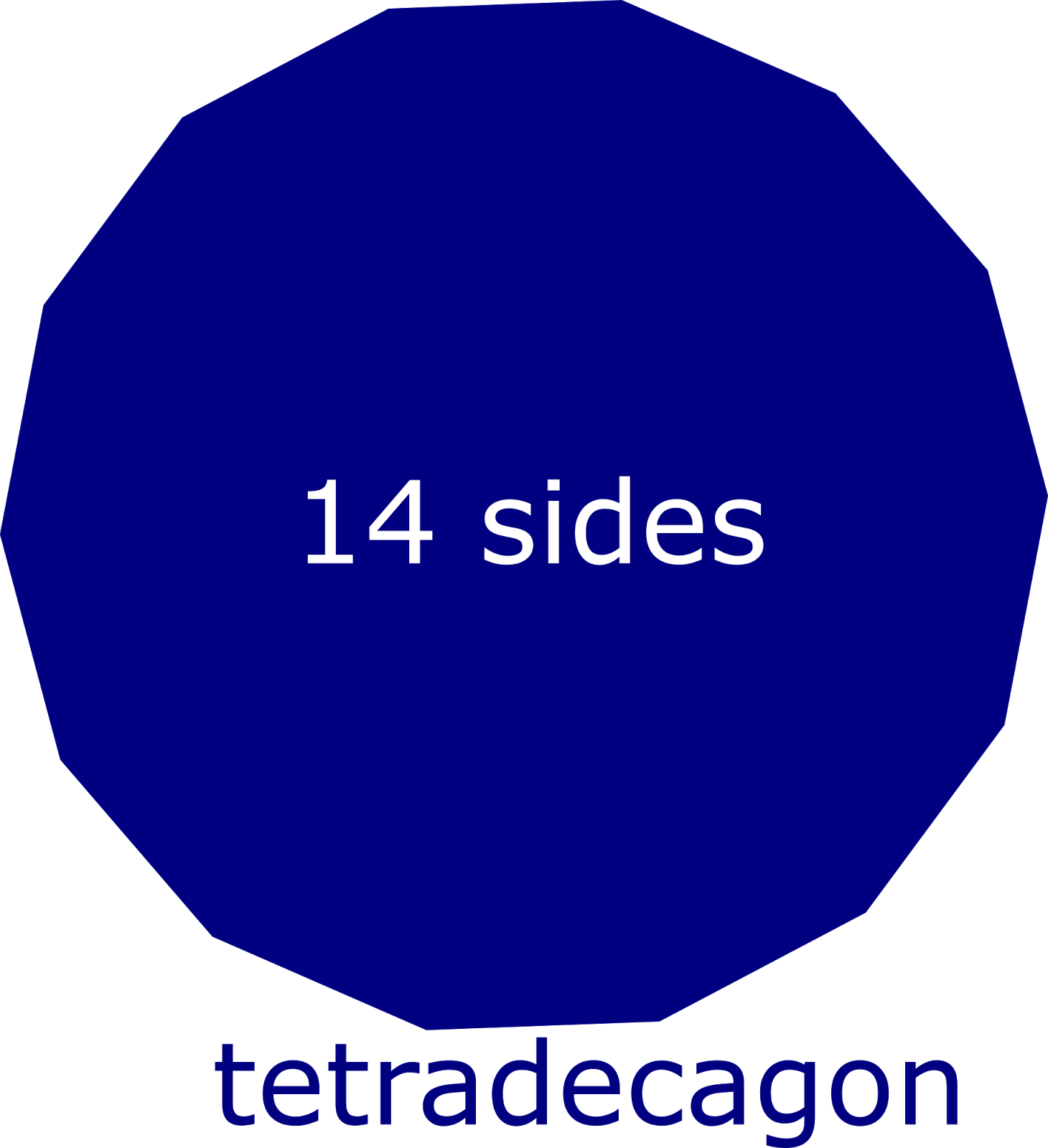When discussing geometric shapes, many people are familiar with basic polygons like triangles, squares, and pentagons. However, as we delve deeper into the world of geometry, we encounter more complex shapes, one of which is a shape with 14 sides, known as the tetradecagon. This article provides a comprehensive overview of the tetradecagon, its properties, and its significance in both theoretical mathematics and practical applications.
The tetradecagon is a fascinating figure that exemplifies the diversity of polygonal shapes. In this article, we will explore its characteristics, formulas, and real-world applications. Whether you're a student, a mathematics enthusiast, or simply curious, this guide will enrich your understanding of this intriguing shape.
From its definition to its mathematical properties, we will cover everything you need to know about the tetradecagon. So, let’s embark on this geometric journey to uncover the beauty and complexity of a shape with 14 sides!
Table of Contents
- Definition of a Tetradecagon
- Properties of Tetradecagons
- Formulas Related to Tetradecagons
- Types of Tetradecagons
- Real-World Applications of Tetradecagons
- Visualizing a Tetradecagon
- Related Polygons
- Conclusion
Definition of a Tetradecagon
A tetradecagon is defined as a polygon with 14 sides and 14 angles. The word 'tetradecagon' is derived from the Greek words 'tetra' meaning fourteen, and 'gonia' meaning angle. In mathematical terms, a tetradecagon can be classified as a convex polygon if all its interior angles are less than 180 degrees, or as a concave polygon if at least one of its interior angles is greater than 180 degrees.
Properties of Tetradecagons
Understanding the properties of a tetradecagon helps in grasping its geometric significance. Here are some notable properties:
- Number of Sides: 14
- Number of Angles: 14
- Interior Angles: The sum of the interior angles of a tetradecagon can be calculated using the formula (n-2) × 180°, where n is the number of sides. For a tetradecagon, this results in a total of 2160°.
- Exterior Angles: The sum of the exterior angles of any polygon is always 360°, regardless of the number of sides.
- Symmetry: A regular tetradecagon has 14 lines of symmetry and rotational symmetry of order 14.
Formulas Related to Tetradecagons
Several important mathematical formulas are associated with tetradecagons:
Area of a Tetradecagon
The area (A) of a regular tetradecagon can be calculated using the formula:
A = (7/2) × s² × cot(π/14)
where s represents the length of one side.
Perimeter of a Tetradecagon
The perimeter (P) of a regular tetradecagon can be found using the formula:
P = 14 × s
Understanding these formulas is essential for solving problems related to tetradecagons in various mathematical contexts.
Types of Tetradecagons
Tetradecagons can be categorized into different types based on their properties:
- Regular Tetradecagon: All sides and angles are equal.
- Irregular Tetradecagon: Sides and angles are not necessarily equal.
Real-World Applications of Tetradecagons
Tetradecagons might seem abstract, but they have practical applications in various fields:
- Architecture: Tetradecagons can be used in design elements such as floor plans and decorative motifs.
- Art: Artists may incorporate tetradecagons into their works for aesthetic purposes.
- Engineering: Understanding the properties of tetradecagons can aid in designing structures and materials.
Visualizing a Tetradecagon
Visual aids are crucial in understanding geometric shapes. Below is a simple representation of a regular tetradecagon:

In this image, you can see the equal sides and angles that characterize a regular tetradecagon.
Related Polygons
Understanding a tetradecagon can also enhance your knowledge of related polygons:
- Triskaidecagon: A polygon with 13 sides.
- Quindecagon: A polygon with 15 sides.
Conclusion
In conclusion, a shape with 14 sides, or the tetradecagon, is a fascinating subject in the world of geometry. Its unique properties, formulas, and real-world applications make it a significant polygon worth exploring. Whether you're studying mathematics or simply interested in the beauty of shapes, understanding the tetradecagon can enhance your appreciation for geometry.
We invite you to leave a comment, share this article, or explore more content on our site to deepen your knowledge of geometric shapes!
Thank you for reading! We hope to see you back soon for more insightful articles.
Sasha Mitchell: A Deep Dive Into His Life, Career, And Achievements
Dr. Paul Nassif Price List: Understanding The Costs Of Expert Cosmetic Surgery
Kendall Toole Breast Implants: What You Need To Know


